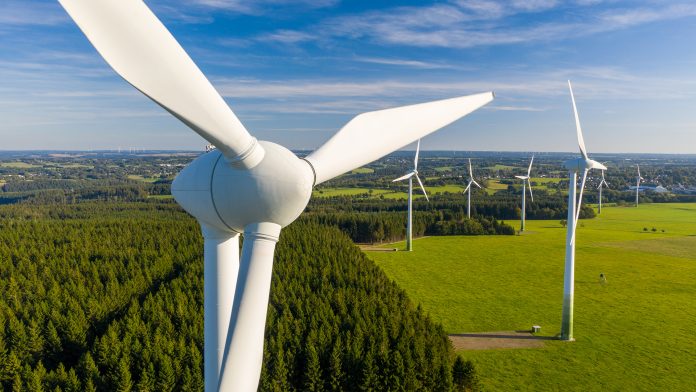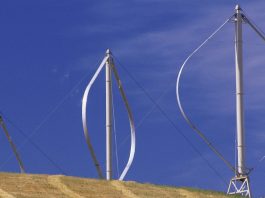Lithuanian researchers have developed an innovative method using pyrolysis to solve the challenge of wind turbine blade recycling.
Wind turbine blades have a vital role in the transition to clean energy.
However, when the blades reach the end of their operational lifespan, disposal becomes a serious concern.
Wind turbine blades, made with composite materials such as layers of fibreglass or carbon fibre reinforced with epoxy, can be used for 20 to 25 years.
Although these materials ensure strength and lightness, they also complicate the recycling of them.
Pyrolysis for wind turbine blade recycling
Until a few years ago, wind turbine blades were almost impossible to recycle.
Conventional disposal methods like landfilling pose environmental risks and resource depletion.
Because of this, researchers are looking for new recycling methods.
In 2022, Dr Samy Yousef, a researcher at Kaunas University of Technology (KTU) Faculty of Mechanical Engineering and Design, and a team of researchers from the Lithuanian Energy Institute, completed several experiments to develop a new solution.
The team used a special catalyst to break down old composite materials in a pyrolysis process. This separated valuable components for reuse and recycled old composite materials into useful energy.
Testing on a real wind turbine blade
Previous experiments using blade samples provided insights into their composition and pyrolysis process.
However, a limited availability of samples interfered with the identification of the actual recycling outcome.
In 2023, the team continued their experiments on real wind turbine blade fragments provided by Danish Company European Energy A/S.
“In our new research, experiments were performed on fragments of real wind turbine blades, allowing the yield and composition of final products to be determined,” said Dr Yousef.
Styrene is a significant environmental risk
The blades’ analysis revealed that unsaturated polyester resins are significant in the production of wind turbines in the Baltic region. This is because they are cost-effective compared to epoxy resin.
However, styrene, which is a major component in polyester resin, poses environmental and health risks.
“When disposed of in landfills, it becomes highly toxic for humans and can cause lung cancer. In addition, styrene can pollute and poison groundwater and soil,” explained Dr Yusef.
Environmental impact of the team’s blade treatment
The team successfully extracted styrene from blades in the form of styrene-rich oil using a pyrolysis reactor.
“The main goal of the research was to find a way to extract carbon fibres and resin from old wind turbine blades that are difficult to dispose of because they contain toxic substances and aren’t biodegradable,” said Dr Yousef.
During the experiments, the fibres, carbon, and fibreglass were also recovered and purified through an oxidation process. This offered a sustainable filler material to enhance the mechanical properties of composite materials.
As well as this, the environmental impact of blade treatment using the pyrolysis process was calculated. Dr Yousef’s team used the life cycle assessment to calculate the environmental potential of blade waste pyrolysis compared to landfill disposal.
“Results revealed remarkable improvements in various environmental indicators, with enhancements that range between 43–51%. This is a great achievement,” highlighted a KTU researcher.
However, the strategy still raises some environmental challenges due to post-treatment processes like washing and oxidation.
“These issues need to be carefully managed, and only then should future developments take place,” concluded Dr Yousef.









